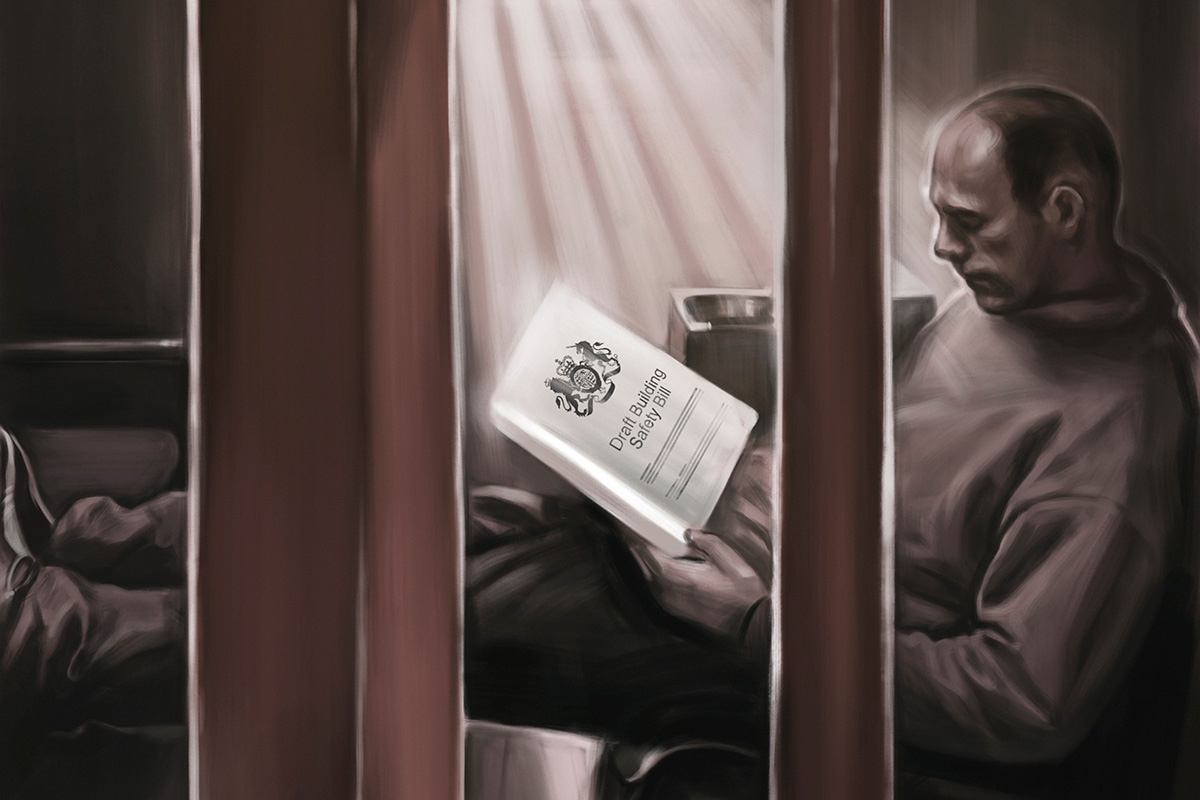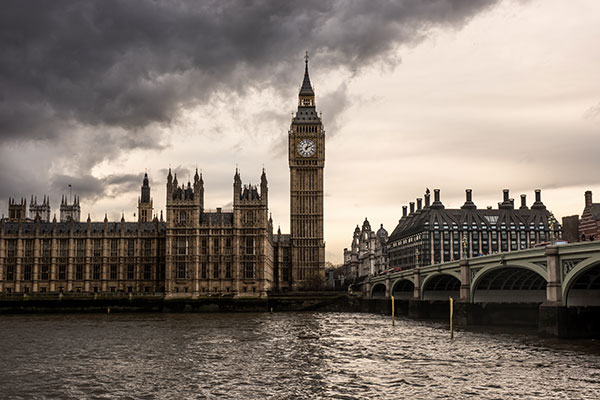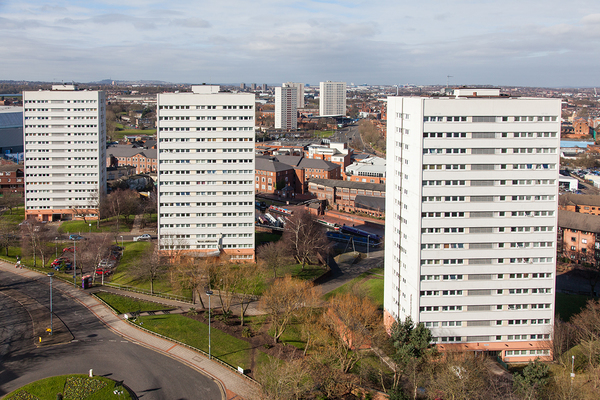You are viewing 1 of your 1 free articles
Building safety sanctions: what social landlords need to know
Draft building safety legislation includes tough new criminal sanctions such as unlimited fines and considerable jail terms. Dominic Brady and Nathaniel Barker explore what social landlords should consider to avoid ending up in the dock. Illustration by Dan Strange
After months of anticipation, the government has finally published a draft version of its Building Safety Bill.
This mammoth piece of legislation is intended to overhaul the whole regime for ensuring the safety of residential buildings in England in order to avoid a repeat of the terrible Grenfell Tower fire.
The 334-page bill is wide-ranging and complex. It introduces major changes – not least a new regulatory body and the concept of ‘building safety charges’, which are set to have a dramatic impact on building owners and leaseholders alike.
For social landlords, a major concern will be the new sanctions embedded in the bill. The tougher rules come with tougher punishments, including prison sentences of up to two years. Clearly, no one wants to end up behind bars, so Inside Housing has spoken to the experts and rounded up some of the key points to consider.
While the bill sets out several specific requirements providers must meet to avoid breaching the law, the possibility for prosecution remains broad. Mark London, head of the construction and technology team at law firm Devonshires, says the scope of the bill is “extremely wide”, adding that “there are literally thousands of potential non-compliances”.
This is because although the bill gives examples of specific breaches, such as failing to appoint a competent ‘accountable person’ or register a building with the new regulator, it also includes the following clause: “It is an offence for an accountable person for a higher-risk building to contravene, without reasonable excuse, any relevant requirement where that failure places one or more people in or about the building at critical risk.”
“Critical risk” is defined as a risk that poses a threat of serious injury or death and the punishment is a fine or imprisonment, or even both. As Mr London points out: “Anything that happens within that building in terms of maintenance, repair or work generally, could theoretically give rise to a risk of serious injury or death. Everything will have to be risk assessed to within an inch of its life.”
However, it might not be time to panic just yet. Rebecca Rees, a partner at Trowers & Hamlins, explains that criminal offences have a high trigger threshold, so “it’s unlikely you’re just going to trip into them”.
Although the terms for the sanctions are indeed broad, she adds, they are not “inconsistent with the wider requirements of the bill” and so should not present hidden ways to land oneself in front of a judge.
“Providers, or the accountable person, would have to fail to undertake something they are required to do by the legislation and that would be the cause and effect,” she says.
The language in the bill does not always tell the full story. For instance, the use of “accountable person” throughout implies an individual will be responsible in all instances, but this is not the case. When it comes to social landlords, the accountable person will probably be a team of people, meaning that the organisation would face a hefty fine.

Mr London notes it is unlikely that an individual would be willing to take the full responsibility for a building where it can be distributed between a number of people, which is allowed under the legislation. Instead, prison sentences are more likely to apply to buildings where there is one private owner who failed to comply with the legislation.
Nevertheless, it is still possible that individuals working for social landlords could face criminal sanctions. “Where you could end up with individuals in the dock is if the corporate body – likely the RP [registered provider] – commits a criminal offence but an executive officer is deemed to have consented to it, connived in it or allowed it to occur through neglect,” explains Ms Rees. At a housing association, this would be a risk for members of the executive team.
That might make some uneasy, although it is not unprecedented. “This idea of individual responsibility arises under our existing fire safety legislation and under our existing health and safety legislation,” says Katherine Metcalfe, legal director at Pinsent Masons.
“You also get it in a whole range of financial crimes, for example, as well.”
On a side note, both building safety managers – appointed by the accountable person to ensure standards are maintained in high-risk blocks – and approved building inspectors can be fined but not imprisoned under the legislation.
There are two main tools included in the bill which can be used against unsafe building practices: compliance notices and stop notices.
An accountable person or building safety manager can be served a compliance notice if they are found to be in contravention of one of the aforementioned relevant requirements (see box).
The notice, which can be served by the Building Safety Regulator or the local authority, will require the recipient to take specified steps to remediate the issue within a specific period. Failure to adhere to the notice without a “reasonable excuse” can lead to two years in prison or a fine, or both, where there is a conviction on indictment.
On the other hand, there are stop notices, which are more likely to be discharged in the construction phase.
Again, the regulator or the local authority has the power to serve these notices to an accountable person or building safety manager if they appear to be breaching the building regulations set out in the bill.
Breaches that could result in criminal sanctions
- Failing to appoint an accountable person or building safety manager as soon as practicable with skills and knowledge to carry out the role. Failure to comply could lead to a prison term of up to two years or a fine (or both) where there is a conviction on indictment. There will be a daily fine for continued breach until a suitable individual is appointed.
- Failing to register a high-risk building with the Building Safety Regulator before it becomes occupied. Failure to comply could lead to an unlimited fine or imprisonment up to 51 weeks (or both) on summary conviction. There will be a daily fine until the accountable person has made an application to register the building.
- Failing to provide information to the accountable person. Failure to comply could lead to a prison term of up to two years or a fine (or both) where there is a conviction on indictment.
- Obstruction of authorised officers such as blocking the Building Safety Regulator from carrying out an inspection. Failure to comply could lead to triable at a magistrates’ court with a maximum fine for obstruction of £1,000.
- Providing false or misleading information to the regulator. Failure to comply could lead to a prison term of up to two years or a fine (or both) where there is a conviction on indictment.
- Failing to provide information or documentation to the regulator. Failure to comply could lead to the maximum penalty of an unlimited fine, along with up to two years’ imprisonment in the Crown Court
or 12 months in a magistrates’ court.
The notice can prohibit, either immediately or from a specified time, work on a building until remedial steps are specified. Failure to comply can result in a two-year prison sentence and a fine.
It is particularly important that these notices are met with action, as this is where the risks of criminal charges will be both acutest and widest and where the “thousands of potential non-compliances” warned about by Mr London could kick in.
The costs to social landlords associated with the Building Safety Bill are likely to be significant. “It is going to make the management of those buildings an extraordinarily expensive, difficult and time-consuming task,” says Mr London. Some might be tempted to bend the rules slightly in order to manage these sums – although that is a risky strategy and could end up costing far more in fines.
As Dame Judith Hackitt noted in her review of building regulations and fire safety – the precursor to this bill – ensuring that the industry complies with a stringent new regulatory regime needs strong incentives for businesses.
“It seemed to her that to ensure landlords implemented and observed the more stringent regulatory regime, you sometimes need a stick as well as a carrot to make people do what they are supposed to do – these sanctions are the stick,” says Ms Rees.
“This legislation will cost landlords more, and there will inevitably be recalcitrant landlords who need that threat to do all that is asked of them.”
To that end, landlords are no longer going to be able to take a reactive approach, they need to be proactive in addressing building safety issues, argues Mr London.
For many of the breaches, the fine will be unlimited, leaving providers open to large bills where non-compliance is found. Housing associations have faced hefty bills in the past where building safety has not been up to scratch – notably at Aster Group’s subsidiary Synergy Housing, which had to pay more than £1m when a five-year-old girl tragically died as a result of a faulty lift that breached health and safety laws.
So how can the sector avoid falling foul of the bill and being struck by a hefty fine or worse?
The answer, Ms Rees contends, comes down to having transparent information passing between teams and regular and auditable reporting to the executive team and board about building safety matters. This speaks to the “golden thread” principle highlighted by Dame Judith, which Ms Rees says should be “enshrined” in processes and procedures.
“That way someone consenting to or conniving in an offence is likely to be picked up on, or no one can say they didn’t know about the issues,” she argues. “If the right person sees the right information at the right time, then the risk of sanctions should be mitigated.”
While they naturally grab the attention, the criminal sanctions should not be regarded as the be all and end all of the Building Safety Bill.
There are other ‘sticks’ besides which will be significant. For instance, the time limit in which prosecutions can be brought forward for breaches of building regulations is currently only two years. Once the legislation passes, that period will be increased to 10 years. The Building Safety Regulator will also have the power to appoint a ‘special measures manager’, replacing the accountable person and building safety manager as being in control of a high-risk building where issues have been uncovered.
“Potential related governance sanctions for failure of building safety from the Regulator of Social Housing are probably a bigger day-to-day worry for RPs than criminal sanctions,” Ms Rees predicts.
“A properly run social housing provider is unlikely to end up standing in the dock, but it could face governance downgrades arising from failures relating to the building safety legislation.”










